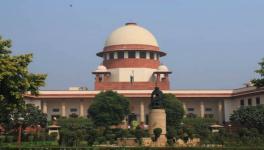Central Vista: Justice Khanna Writes 179-Page Note of Dissent
New Delhi: Supreme Court judge Justice Sanjiv Khanna Tuesday gave a dissenting verdict on the government's ambitious Central Vista Project saying there was a need for proper public participation, prior approval by the HCC and "application of mind" by the expert committee, EAC.
A three-judge bench headed by Justice A M Khanwilkar, by 2:1 majority, held that the grant of environmental clearance and the notification for change in land use for the project were valid.
Justice Khanna wrote a separate 179-page dissenting judgement on the aspects of public participation on interpretation of the statutory provisions, failure to take prior approval of the Heritage Conservation Committee (HCC) and the order passed by the Expert Appraisal Committee (EAC).
The apex court judge, however, agreed with Justices A M Khanwilkar and Justice Dinesh Maheshwari on the majority on the aspects of Notice Inviting Bid, award of consultancy and the order of the Urban Arts Commission, as a standalone and independent order.
"The Central government could not have notified the modified the land use changes, without following the procedure and without prior approval/permission from the Heritage Conservation Committee. Further, the local body is expressly interdicted from issuing building permits in respect of the listed heritage buildings/precincts.
"New Delhi Municipal Council should have approached the Heritage Conservation Committee for clarification/confirmation and proceed on their advice," Justice Khanna wrote.
He said public participation is not to be a mechanical exercise or formality and it must comply with the least and basic requirements so that it is fruitful and constructive.
"Thus, mere uploading of the gazette notification giving the present and the proposed land use with plot numbers was not sufficient compliance, but rather an exercise violating the express as well as implied stipulations, that is, necessity and requirement to make adequate and intelligible disclosure," he said.
Justice Khanna further said that the whole purpose of outsourcing the task to EAC, comprised of experts and specialists, is to have a proper evaluation on the basis of some objective criteria.
"EAC is a body that has to apply its collective mind and not to record conclusions. There must be application of mind which is reflected when reasons justifying the conclusion are recorded. Mere reproduction of the contesting stands is not sufficient.
"On the contrary it would reflect mechanical grant without application of mind. Further, it is not for the court/appellate forum to assume what weighed, whether the conclusion relies on material which is relevant, irrelevant or partly relevant, or whether the decision is partly based on surmises and conjectures and partly on evidence," he said.
He said the citizenry clearly had the right to know intelligible details explaining the proposal to participate and express themselves, give suggestions and submit objections.
Observing that the proposed changes would be largely irreversible, Justice Khanna said the physical construction or demolition once done, cannot be undone or corrected for future by repeal, amendment or modification as in case of most policies or even enactments.
"They have far more permanent consequences. It was therefore necessary for the respondents to inform and put in public domain the redevelopment plan, layouts, etc. with justification and explanatory memorandum relating to the need and necessity, with studies and reports.
"Of particular importance is whether by the changes, the access of the common people to the green and other areas in the Central Vista would be curtailed/restricted and the visual and integrity impact, and proposed change in use of the iconic and heritage buildings," he said.
Justice Khanna quashed the final notification of modification/change of the land use dated March 28, 2020 in respect of the six plots in the Central Vista and directed the Central government to put on public domain on the web, intelligible and adequate information along with drawings, layout plans, with explanatory memorandum etc. within a period of 7 days.
He also directed that a public advertisement be out on the website of the concerned authority and the Central government along with appropriate publication in the print media be made within seven days.
"Anyone desirous of filing suggestions/objections may do so within four weeks from the date of publication. Objections/ suggestions can be sent by e-mail or to the postal address which would be indicated/mentioned in the public notice.
"The public notice would also notify the date, time and place when public hearing, which would be given by the Heritage Conservation Committee to the persons desirous of appearing before the said Committee. No adjournment or request for postponement would be entertained. However, the Heritage Conservation Committee may if required fix additional date for hearing," he said.
HCC would decide all contentions in accordance with the Unified Building Bye-Laws and the Master Plan of Delhi, Justice Khanna said.
The directions would, however, be ineffective as they are minority part of the judgement.
Get the latest reports & analysis with people's perspective on Protests, movements & deep analytical videos, discussions of the current affairs in your Telegram app. Subscribe to NewsClick's Telegram channel & get Real-Time updates on stories, as they get published on our website.
























